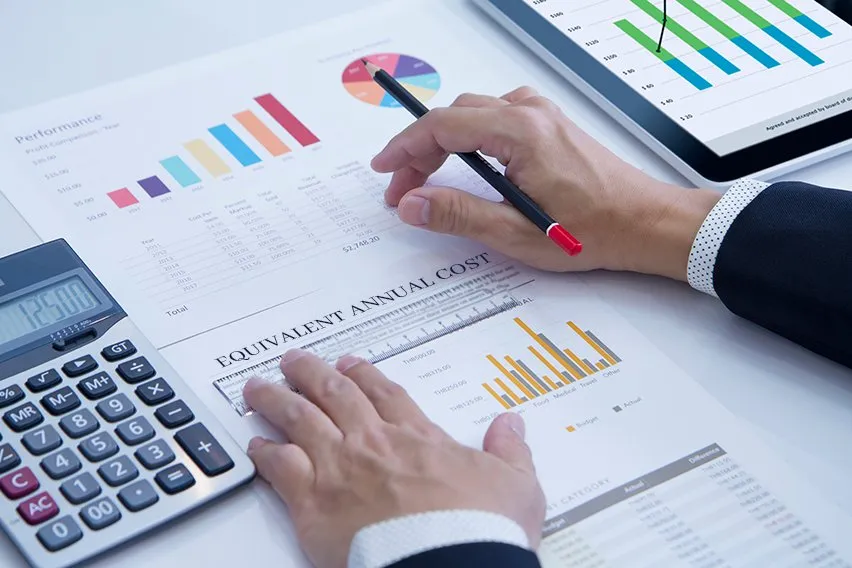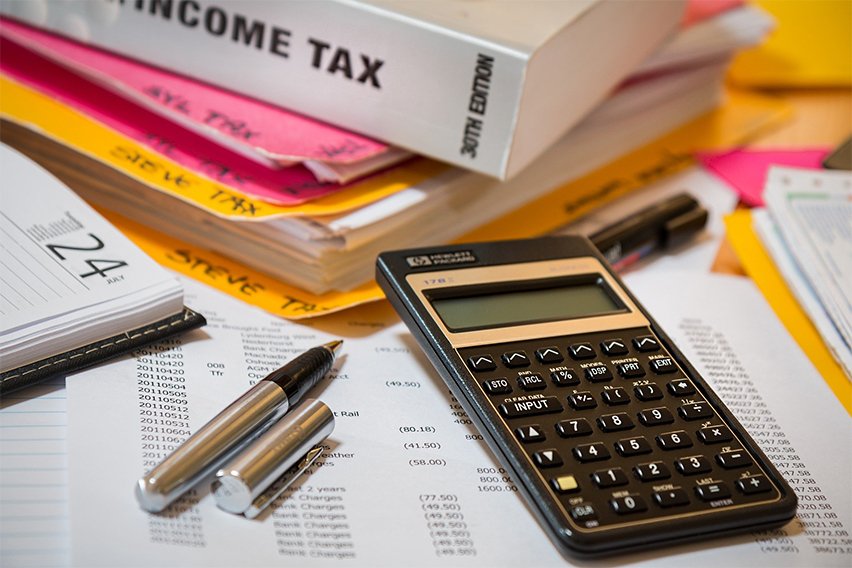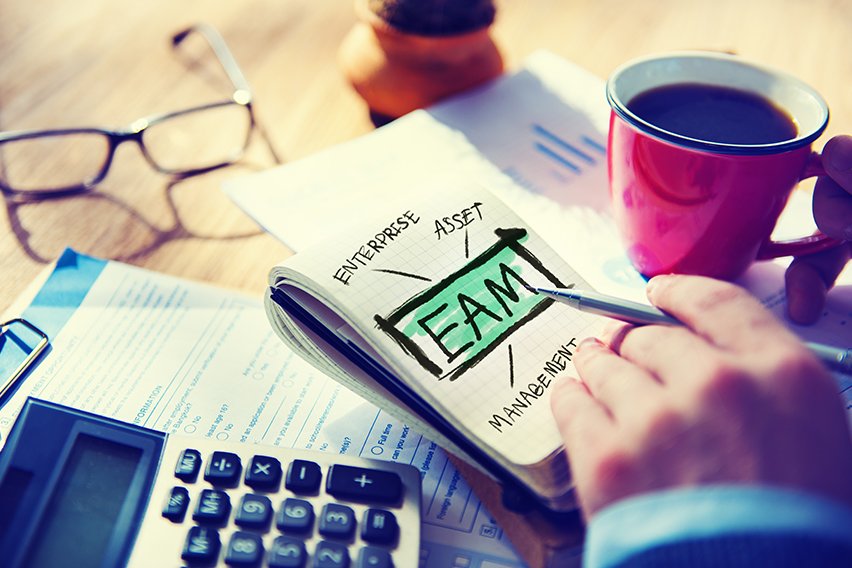Equivalent Annual Cost: Definition & Benefits

There are loads of different options when you’re looking to make an investment. Often, making the choice can be difficult. Thankfully, there are a number of methods that can help you make those decisions. One of those methods is the equivalent annual cost formula. If you’re having trouble choosing one option over another, keep reading to learn about this method! It’ll make the decision-making process a lot easier on you.
Here’s What We’ll Cover:
What Is the Equivalent Annual Cost Method?
Comparing EAC to Whole-Life Cost
Can EAC Be Used In Personal Life?
What Is the Equivalent Annual Cost Method?
The equivalent annual cost (EAC) method is a strategy employed when choosing an investment option. Equivalent annual cost refers to the cost-per-year of owning something. It takes the net present value of an asset and divides it by the annuity factor. It also takes into account a few other expenses:
- Annual Maintenance Cost: This refers to the annual maintenance expense of an investment.
- Annual Operational Costs: The total cost to operate an investment each year.
- Asset Purchase Price vs. Lease: Not all assets are less expensive over time if purchased outright. This formula can help you determine that, as well.
This analysis is often used during a capital budgeting project. It is an effective way to compare the cost-effectiveness of different assets. You may have expectations of cost when purchasing something, but this can help you accurately predict the cost of most assets.

How Is EAC Calculated?
EAC is calculated using a specific formula that’s easy to understand. All you need to have on hand are the following figures.
- Asset Price: How much does the asset cost?
- Discount Rate: The return required to make a project worthwhile.
- n: The number of periods an asset will be used for.
If you have these available, you can insert them into the following formula:
EAC = (Asset Price x Discount Rate) / 1 – (1 + Discount Rate)–n
Here are the step-by-step instructions for calculating EAC using the above formula.
- Multiply the asset price and the discount rate together.
- The discount rate is also called the cost of capital. This is the required return necessary to make a capital budgeting project worthwhile.
- Add the discount rate to 1, and raise the result as an exponent to the number of years anticipated for the project. Subtract the answer from 1.
- Divide the numerator by the denominator.
- If this is difficult to follow, there are many EAC calculators available online. They’ll calculate the EAC for you.
Comparing EAC to Whole-Life Cost
The EAC formula only takes into account the functional life of an asset. It is used to determine the annual expenses incurred by an asset, in relation to a project. This includes owning, operating, and maintaining an asset over its functional life.
The whole-life cost is the entire expense of an asset. It is less concerned with the annual costs incurred, as it is meant to calculate all of the possible expenses of an asset. Whole-life cost analysis follows the entire life of the asset. This means that it factors in purchase price, as well as disposal price. Life cycle costs of an asset generally include the following expenses:
- Initial cost
- Purchase and installation
- Design and building costs
- Operating costs
- Maintenance costs
- Associated financing costs
- Depreciation costs
- Disposal costs
To maintain life, an asset must remain in a serviceable condition. If it surpasses this condition, then it is disposed of. Then, the whole-life cost is completed.
What is EAC Analysis Used For?
EAC is used to determine the cost of capital for assets that have unequal lifespans. This is the best way to choose the asset with the best cost-effectiveness. Without this method, there’s a good chance that unnecessary expenses will be incurred by a company.
What Are the Benefits of EAC?
The main benefit of using the EAC method is that it lets managers review options and choose the best one. By choosing the asset that makes the most sense, companies can save money and increase profit margins. Using the method, a company may find that the product with a 3-year lifespan costs less than the cheaper alternative.
When running a business, the most important decisions you’ll make need analysis. There are many instances in which purchasing or leasing the wrong asset can break the business. EAC helps you avoid that situation.

Limitations of EAC Analysis
EAC analysis may not take everything into account, however. As such, it’s important to understand the limitations of EAC.
Relies on Estimations
Most notably, EAC analysis relies on a discount rate estimate. Because this is an estimate, it decreases the accuracy of EAC. Remember, the discount rate is the minimum return required to make a project worthwhile. Because no one can see into the future, this figure can easily change due to a number of reasons.
Doesn’t Take Into Account Anomalies
When purchasing an asset like a vehicle, there are certain anomalies that may come into play. We can reliably estimate the vehicle’s use, yes. This means that we can also accurately estimate the maintenance and operating costs for the vehicle. However, not all expenses that are associated with machinery or buildings are routine. Some of the issues that may occur are:
- Deterioration of physical condition. As a building or piece of machinery is used, its physical condition will deteriorate.
- Inoperability due to damaged condition. Should an asset become damaged and be rendered inoperable, its effective life is over. This is a cost overlooked by EAC.
The cost of owning something needs to take into account the possibility of a shorter lifespan. In this scope, it can sometimes be calculated that purchasing a shorter-lived product multiple times costs less. Unfortunately, this can’t be assessed without a review on durability. To carry out a study like that and determine an actual product lifespan, the product must be purchased.
Can EAC Be Used In Personal Life?
Absolutely. When purchasing a car, the project period would be the expected lifespan of the car. Most cars come with an expected functional life. This can be expressed in mileage, which can then be translated to time. To express mileage in time, you need to know how much you drive annually. This will give you the number of years that you’ll need the vehicle or it to be cost-effective.
Using EAC in business and personal life also leads to other methods that can be employed. You can plan according to a few different concepts:
- Optimal Replacement Cycle: This is the period of time that’s best for you or your business to replace an asset.
- Potential Replacement Cycle: This is what the replacement cycle could be. It factors in any unexpected issues, such as loss or damages.
Most of the time, both businesses and individuals find themselves on a three-year replacement cycle. Fleet vehicles, fixtures, machinery, and sometimes even workspaces are changed out on this cycle. It is dependent upon what your business needs are, however. For example, if fleet vehicles are hardly used, it makes no sense to replace them every three years.
Many individuals and businesses will ignore replacement cycles if certain factors don’t come into play. A car is a great example of this. If a vehicle can reliably get you to and from destinations, a replacement cycle is arbitrary until the vehicle is unreliable.
Key Takeaways
Equivalent annual cost is a great way to determine if buying one asset over another is worth it. It allows businesses and individuals to purchase assets responsibly, and factors in the costs for them. If you need more financial information like this, be sure to check out our resource hub! There are more articles like this housed there.
RELATED ARTICLES

 What Is Comparative Advantage Theory? Benefits & Examples
What Is Comparative Advantage Theory? Benefits & Examples Subsidiaries Definition & How Does a Subsidiary Company Work
Subsidiaries Definition & How Does a Subsidiary Company Work Difference Between LTD Vs PLC Company
Difference Between LTD Vs PLC Company 7 Business Etiquette Basic Rules You Should Know
7 Business Etiquette Basic Rules You Should Know What Is EV (Enterprise Value): Definition, Example & Calculation
What Is EV (Enterprise Value): Definition, Example & Calculation What Is a Beneficial Owner: Definition & Guide
What Is a Beneficial Owner: Definition & Guide